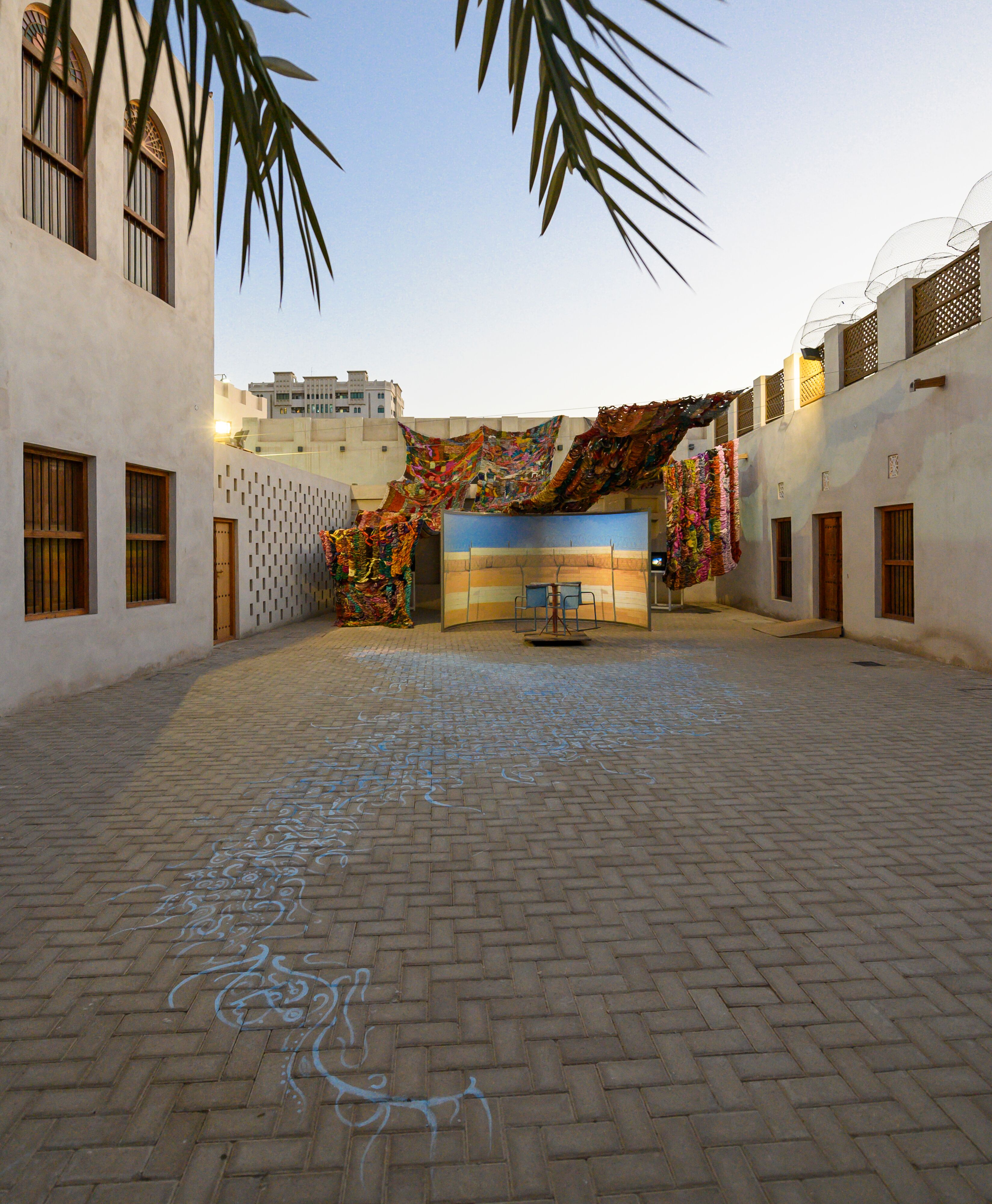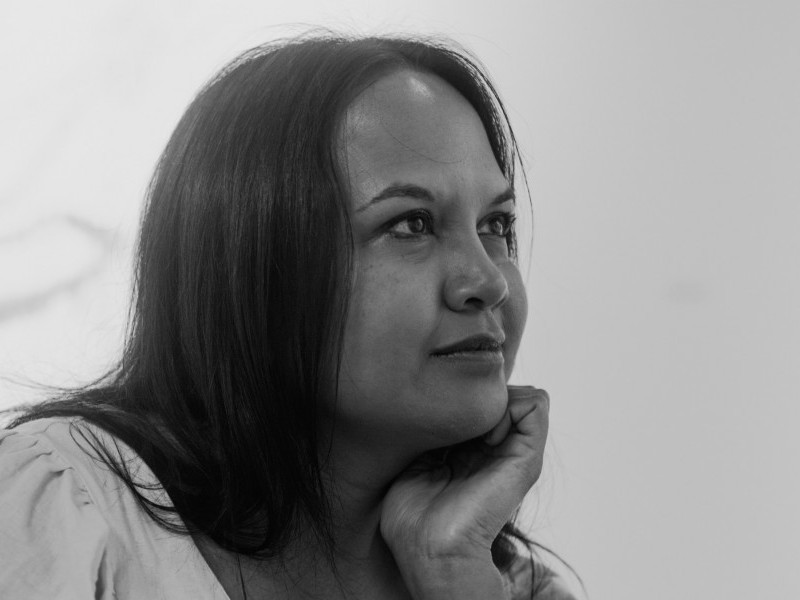Interested in the iconography of the domestic sphere as well as fiber-based production processes, Suchitra Mattai creates work in various mediums that investigates the complex relationships between history, memory and the construction of identity in diasporic communities. She focuses on how environments can shape personal narratives, ancestral histories and the creation of ‘home.’
In her installation commissioned for SB14, Imperfect Isometry (2019), Mattai considers how spheres of politics, community and individual experience overlap in complex and sometimes contradictory ways. After collecting vintage saris from India, Sharjah and her own Indo-Caribbean family, the artist wove them together to create an intimate textile topography. This part of her installation draws on the histories carried by the well-worn garments, exploring the experience of traversing physical and psychological borders and the entanglement between people and places, the imprisoned and the free. For the second part of the installation, a merry-go-round was unearthed from the now closed Kalba Kindergarten and relocated to the Bait Obaid Al Shamsi courtyard. Symbolising the ongoing cycle of separation between peoples, cultures and classes, this gesture of displacement introduces elements of youth, innocence and play amidst the ‘fiberscape’ of saris. The third part of the installation, a multi-channel video work, examines how national and physical borders ultimately configure not only our political and social identities but our private ones as well.



